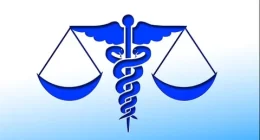Tool marks are the impressions left by a tool on coming in contact with a surface. These tool marks show differing types of characteristics depending on the sort of impression, its shape and the way the mark was created. Depending upon the force with which the marks are put, the tool marks are divided into different categories.
The examination of tool marks is an important factor in the sector of criminalistics because it can directly establish the link between a tool mark and the tool that created it. These types of impressions help to reconstruct the crime scene. In the field of forensic science, the tool marks can either take the form of negative impressions or an abrasion or both.
A culprit usually uses the same set of tools in the commission of the similar types of crimes. If tool marks from various crimes are compared and found identical, the crimes can be linked. Tool marks are of great importance in criminal investigation.
Characteristics of tool marks
Tool marks have two different kinds of characteristics:
Class and Individual.
Class characteristics: These types of characteristics of a tool mark include the type of impression, its general shape and dimensions. These characteristics are typically the broad characteristics from which the crime investigator can determine what type of tool created the impression and how was it created. But, this does not serve the purpose of the identification of the exact tool that actually created the mark. Thus, if only the class characteristics would have been available, then it would not have been possible to distinguish which tool among a pack of similar tools made an impression. For this, individual characteristics are taken into consideration.
· Individual characteristics: Individual characteristics are microscopic characteristics, which refer to the small, peculiar features exhibited by the tool that are individual to one particular tool. These characteristics include small, microscopic ridges and irregularities present on the tool itself. For example, the tip of a screw driver is never exactly flat but has irregularities near its edge. These characteristics are created by the use and misuse of the tool, its cleaning and maintenance. These characteristics actually permit a formal identification. If such characteristics are available on a tool mark, then it is possible to identify the tool that was used in committing the crime, even among a series of identical tools.
Types of tool marks
Depending on the force with which a tool comes in contact with a softer surface, Tool marks are divided into different categories.
Compression tool marks
These are the marks made by forcing a tool into a material in such a fashion on leave a negative impression of the tool. The clarity and individuality of the marks depend upon the surface of the tool, the force of impact and nature of the surface receiving the marks There is no lateral motion. At the crime scene, the unique imperfections of the tools are transferred to the surface that make possible a positive identification of the tool involved in the crime.
As an example, when a tool like a screw driver is used by the criminal to forcefully intend a metal surface without penetrating, then the impressions it leave will be helpful in identifying the tool.. The common example of the tool making such marks are hammers, punches, dies and metallic stones.
Sliding marks
These are caused by the sliding contact of the tool with the another surface. The surface is scratched during a characteristic fashion depending upon the irregularities of the scratching surface of the tool. The marks are left within the sort of striations. The width, depth and inter-distance vary to a certain extent depending upon the angle of application, the force used and the relative hardness of the surface. In such a case, the tool is placed against an object and is moved parallel to the object or across the object. All tools cause such marks that leave compression marks, provided there is a sliding motion. The tools like swords, axes, chisels, screwdrivers, pliers, knives etc. can create sliding marks.
Repetitive cut marks
These are marks left by the tool by its repeated operation on the recipient surface. Saw, hacksaw, drill etc. are the example of this tool marks. They do not permit identification of the tool except in the rare cases when the cut mark or the hole mark is incomplete. On examining the repetitive marks it’s going to indicate the sort of tool used.
Location of tool marks
The nature of tool marks depends upon the character of crime. If trees are felled and stolen, axe marks could also be found on stumps of the trees. If a house has been broken open, the tool marks will be found at the point of entry, on the locks, safe doors and almirahs.
The stolen parts of vehicles like hub-caps, head-light covers etc. will cover impressions of nails or bolts.
If telephone, electric or transaction wires are stolen, the details of cutting instruments will be found on the cut ends at the scene and on the stolen property.
The major precautions that are to be taken while examining the tool marks:
· Door and windows and other openings with handles or locks at the crime scene shouldn’t be touched if they’re broken or the locks are cut, lest the tool marks or the fingerprints are destroyed.
· A tool shouldn’t be fitted forcibly into the impression which can affect the laboratory analysis.
· The tool marks should be documented completely including sketches and photographs before removing.
· If any trace evidence is found on the tool marks, the examination of the trace evidence should be done prior to tool marks examination.
· Tool marks evidence should be packaged so that it is not damaged as it may change the microscopic characteristics.
· If the tools are stained with blood or some other biological material, then that has to be cleaned using a soft bristle brush and disinfectants like Terg-A-Zyme, ethanol etc.
· The tools are always cleaned with a cotton tipped swabs saturated with ethanol or acetone.
The tool mark examination and matching consists of different phases:
· The first step is to observe some physical features of the tool :
Ø Manufacturer
Ø Type of tool
Ø Composition and color
Ø Condition of tool’s finish
Ø Dimensions of the tool (overall length, width etc)
Ø Any irregularity at the ends of the tool
· The next step is to observe the physical features of the tool marks:
Ø The type of the tool mark
Ø Width or diameter of the tool mark
Ø Type of cutting motion by the tool
Ø Direction of motion of the tool that created the tool mark
Ø Position of the tool mark on the tool
· A photograph of the impression made by the tool is taken which provides a permanent record of some of the characteristics of the tool mark.
· If the carrier or the object where the tool mark is located, can’t be collected as an evidence then a cast of the tool mark is formed with a dental paste.
· After discovering the tool, if its class characteristics match with those exhibited by the tool mark under consideration, then the comparison process is started.
· The tool is observed and a photograph is taken then the comparison tool marks are made from a softer surface.
· The comparison is then done between the comparison tool marks and the tool marks under investigation using a comparison microscope which consists of two microscopes connected with each other with which two objects can be viewed simultaneously with the same degree of magnification or a stereomicroscope.
· If a match exists then the common origin between the two tool marks is established which then leads to a conclusive report of the case.
Comparison of tool marks
The standard and questioned marks are compared usually under the comparison microscope. Due to wide variation in tool marks, the presence of a clean-cut match of a reasonable portion of the questioned and the standard marks can be virtual proof that the same tool made both marks.
The marks, under identical condition of lighting and positioning, look like a series of parallel lines of variable width arrangement. If both marks resemble to a considerable degree, then they are said to be identical.
for more updates, subscribe to our blog.







